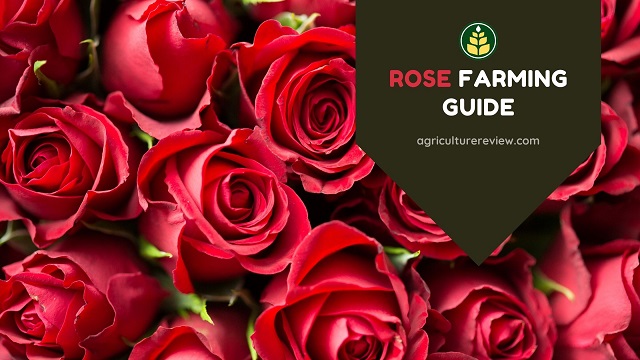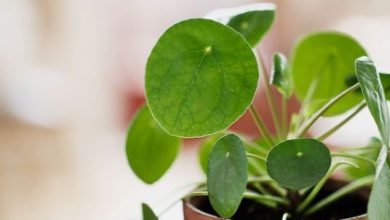Rose of Alexandria: [Cultivation, Care, Irrigation, Substrate and Pests]

The Alexandrian rose is a species of plant with very attractive ornamental characteristics. It offers lush and wonderful pink flowers.
There is no doubt that having a rose of Alexandria will add joy to any space in a garden, home or office.
This beautiful rose does not require much care, both in the garden and in pots. So let’s meet the beautiful rose of Alexandria.
Important points when sowing the Rose of Alexandria
 When? In the spring, by seeds.
When? In the spring, by seeds.- Where? In a place where it receives low to moderate sunlight (partial shade).
- How do we prepare the land? Preferably with organic fertilizers.
- How should we water? Slightly to moderately. It should not be excessive in humidity.
- How often do you have to water? Three to four days a week.
- What pests and diseases do they have? Thecottony mealybug only.
Characteristics of the rose of Alexandria
 The Alexandrian rose (Paeonia bromari) is a beautiful plant that produces pink flowers. This plant is endemic to the Iberian Peninsula, although some researchers place its origin in North Africa.
The Alexandrian rose (Paeonia bromari) is a beautiful plant that produces pink flowers. This plant is endemic to the Iberian Peninsula, although some researchers place its origin in North Africa.
But going back to its location in the Iberian Peninsula, we find that the rose of Alexandria can be found in the mountains of central and southern Spain and Portugal.
This beautiful plant lives naturally between 100 and 1850 meters above sea level. The Alexandrian rose is also known as Santa Clara rose, wild rose, and wild rose.
The height that the rose of Alexandria reaches is approximately 70 centimeters. As an interesting fact we have that its large and beautiful pink flowers are hermaphrodites.
Its fruit is a follicle type, which is covered with a whitish fluff, and inside it has black seeds.
Where should we plant the rose of Alexandria?
 It is best to plant our rose of Alexandria in a place where it does not get direct sunlight, since excessive sun is harmful.
It is best to plant our rose of Alexandria in a place where it does not get direct sunlight, since excessive sun is harmful.
The Alexandrian rose can be planted and live peacefully both in a pot and in our garden. If you decide to have your plant in the garden, you must ensure that the soil has good drainage.
In general, it does not have major problems, since it adapts very well to different situations.
If you have it in a pot you should be more careful. Try to use a universal growing medium combined with perlite (30%). We already know that we have a noble and beautiful plant that can live in almost any soil with good drainage and in pots.
When should the rose of Alexandria be cultivated?
The Alexandrian rose is best grown in spring through the seeds produced during this period. The plant does not get along well with frost. For this reason, the spring season is advisable, once the threat of frost has passed.
In case we are going to have it in a pot, it is mandatory to transplant it every two years.
An interesting detail is that although the crop is ideal in spring, there are those who also sow their seeds in autumn. This autumnal technique consists of placing the seeds in a moist medium (it can be on a moistened napkin) to wait for them to germinate.
After that, the germinated plant will be kept in protection until next spring.
How do we prepare the land?
 Preparing the land properly is always a very important element for the success of our different crops.
Preparing the land properly is always a very important element for the success of our different crops.
In the case of the Alexandrian rose, this is no exception. Let us remember that when planting the Alexandrian rose in the garden, it adapts to any soil as long as it has good drainage.
The land must be fertilized from the beginning of spring to the end of summer. It will always be better to use organic fertilizers.
Guano is used as a very useful organic fertilizer for the Alexandrian rose. Although any other organic type can be used with confidence.
Although it is worth mentioning that chemical fertilizers are also useful. In case of using chemical fertilizers, it is recommended that it be powder if it will be sown in the garden and liquid if it will be sown in a pot.
How to plant rose of alexandria step by step?
As already mentioned, this plant reproduces by seeds, mainly in spring. Let’s see how to plant it:
- Place the seeds on a damp napkin (not in excess moisture). It is recommended to sprinkle sulfur to avoid possible fungi.
- The napkin should be changed every two days. This initial process can begin in the fall.
- After our seeds have germinated and small roots sprout, they are transferred to a pot with vermiculite. The pot should have regular humidity.
- They should remain in that pot until such time as the roots come out of the drainage holes.
- After the growth of the roots, the Alexandrian rose can be transferred in the spring to a normal size pot or to the garden.
What care does the rose of alexandria need?
The care of the rose of Alexandria is varied but at the same time simple to follow. Let’s see the most important.
Beware of high temperatures
The first thing to keep in mind with this plant is that if temperatures exceed 30 degrees in our region, precautions must be taken.
These forecasts include keeping it in semi-shade, that is, trying to keep it out of direct sunlight.
Another way to maintain its humidity is to place it near tall plants, these will protect them from hot winds.
Beware of intense cold
On the other hand, it resists intense cold very well (it can live down to -17º C).
pruning
As for pruning, you have to be careful to remove the withered flowers and dead leaves. It is also convenient to remove the stems that are dry or brown.
Infallible is to water it properly and pay it in the corresponding periods.
What pests and diseases does the rose of alexandria have?
When talking about the pests and diseases that are enemies of this plant, it must be recognized that it is very resistant. It has almost no natural enemies.
In dry and hot seasons it could be attacked by the cottony mealybug.
However, this plague is resolved and nullified by using a soft brush moistened with alcohol. Just rub its surface with a little bit of alcohol.

![Photo of Albizia: [Characteristics, Cultivation, Care and Disadvantages]](https://www.complete-gardening.com/wp-content/uploads/2022/08/albizia-characteristics-cultivation-care-and-disadvantages-390x220.jpg)
![Photo of The [12 Steps] You Must Follow to Grow Watermelons Successfully](https://www.complete-gardening.com/wp-content/uploads/2022/08/the-12-steps-you-must-follow-to-grow-watermelons-successfully-390x220.jpg)

